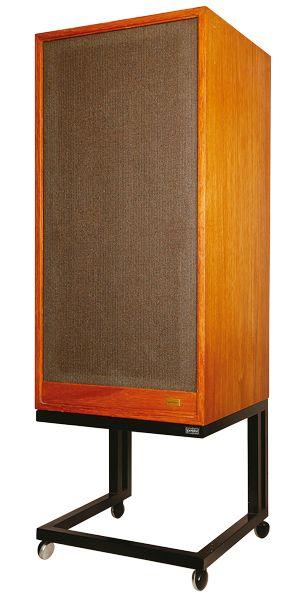Spendor BC III (Vintage)

When the BC III was launched in 1973, Spendor’s ads described it as ‘An extension and refinement of the BC I and BC II’, while Thomas Heinitz, doyen of hi-fi consultants in those days, could not resist using the headline ‘Hey, big Spendor’.
The BC III was rooted in Spencer Hughes’ work at the BBC: he was part of the legendary BBC research team, working under both D E L Shorter and H D Harwood.
It had an 8in driver with 40mm voice-coil, working in its own sealed chamber as a midrange unit while the 12in bass unit was reflex-loaded by a carefully designed port. The crossover point was 700Hz. The 12in unit was mounted on the back of the baffle, and the cutout given straight sides to provide a degree of slot loading, controlling the dispersion and hence improving its integration with the midrange. For the upper registers, the BC III used the Celestion HF1300 as the main high-frequency unit, with a Celestion HF2000 tweeter.
The BC III sat on a trolley stand for optimum height, which allowed them to be moved around easily, and a locking XLR connector was used instead of 4mm sockets.
One of Spendor’s great strengths was stereo imaging, something that the BBC had a real requirement for. Says Philip Swift, who bought the company in 2001: ‘These were the early days of FM stereo broadcasting. And it’s quite wrong to assume that a narrow baffle gives you a better stereo image.
‘A wide speaker, as near as you can get to being an infinite baffle, ensures that the drive units don’t “see” the edges of the baffle – and that can have a significant advantage for imaging.
‘And a superficially sharpened stereo image is actually brought about by phase inconsistencies created between the main output from the driver and the diffraction effects of the cabinet. You are no longer listening to a sound where the performers are just seamlessly hanging in space as they should be.
‘The Spendor loudspeaker took account of all of these things. Even the shapes of the cutouts in the baffle were designed to minimise any interactions.’
Effortless sounds
It was almost with trepidation that we set up the BC IIIs. Would these bluff-looking boxes really have the old Spendor magic we remembered? We put on Art Pepper Meets The Rhythm Section [Contemporary]. Pepper’s sax, by itself on the left, had real presence with attack and force, while Red Garland’s piano seemed strongly characterised and well located in space. Similarly we had a strong sense of Philly Joe’s drums existing as a whole kit. There was a feeling of real body and purpose to the snare and tom-tom sounds, and brushed cymbal had a fine delicacy.
With Dylan’s epochal Blood On The Tracks [Columbia], it seemed that the big Spendors let you feel the impact of Dylan’s lyrics thanks to a combination of real clarity and smoothness, keeping him right where he should be, out front.
Verdict
With bass that’s beautifully even, if neither deep nor powerful by today’s standards, the BC III still sounds effortless and revealing, voices and instruments appearing believably in a natural and inviting soundstage. An enduringly
well-balanced classic.
Originally published in the 2013 Yearbook
























































